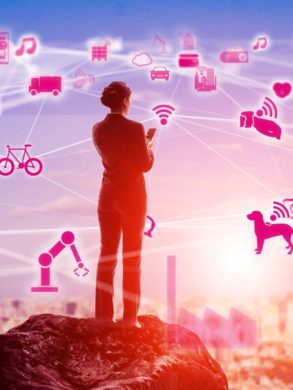
The IoT (Internet of Things ) has been rising in recent times. According to the IDC (International Data Corporation), more than 50 billion things will be connected to the Internet by 2025; consider that over the last ten years:
- The unit price of sensors has gone from $1.30 to $0.60.
- There is a decline in bandwidth cost by 40 times.
- There is a reduction in processing costs by 60 times.
IInterest and revenues have grown in everything from smartwatches
and other wearables to smart cities, homes, and smart cars. Let’s take a closer look:
IoT Wearables
According to IDC, vendors shipped 56.8 million units of wearables in 2019, up more than 133% from 2018. By 2025, IDC forecasts
annual shipment volumes of 126.1 million units, resulting in a five-year CAGR(compound annual growth rate) of 45.1%; this fuels big data streams for healthcare research and development in commercial markets and academia.
Smart Cities
With the tremendous increase in the world’s population expected to live in urban cities, we will see the rapid expansion of city borders, driven by population increases and infrastructure development. By 2023, there will be 30 megacities globally; this, in turn, will require attention on smart cities to make them more sustainable and low-carbon cities by putting initiatives in place that make these places more livable and attractive to investors. The market will continue to grow by 2022, almost touching $1.5 trillion through diverse areas such as transportation, buildings, infrastructure, energy, and security.
Smart Homes
According to BI Intelligence, smart home devices are forecasted to ship at a CAGR of more than 68% over the next five to six years and will reach 1.8 billion units by 2023. Smart devices include security systems, energy equipment like smart meters, refrigerators, washers and dryers. By 2023, its forecasted that it will represent approximately 27% of total IoT product shipments.
Autonomous Cars
Autonomous vehicles (AVs), also known as self-driving cars, are already disrupting many industries. Although the exact timing of maturity, technology, and sales are unclear, these smart vehicles could eventually play a significant role in the world economy. According to McKinsey & Co., in addition to other advantages, smart vehicles could reduce the incidence of car accidents by up to 90%, saving billions of dollars annually.
There are many use cases related to Data Analytics and Machine Learning, including the computational gap between CPU storage, modeling machine failure in the IoT, networks on the IoT, modeling the data for the smart city of the future. Here are some of the Case studies, including but not limited to:
- Spark Streaming- to predict any public transportation equipment failure
- Usage of a new IoT app for traffic monitoring in Singapore
- Smart City Traffic pilot in the Oulu city of Finland
- An ongoing longitudinal study by using personal health data to reduce cardiovascular disease
- Data analytics is in use to minimize the risk in human space missions under NASA’s Orion program
We should also consider the ethics perspective of Data Analytics related to the algorithms that control the issues in the Internet of Things. There is a critical need for further discussions related to IoT data and a window of opportunities to influence the moral essence involved in using the IoT.
